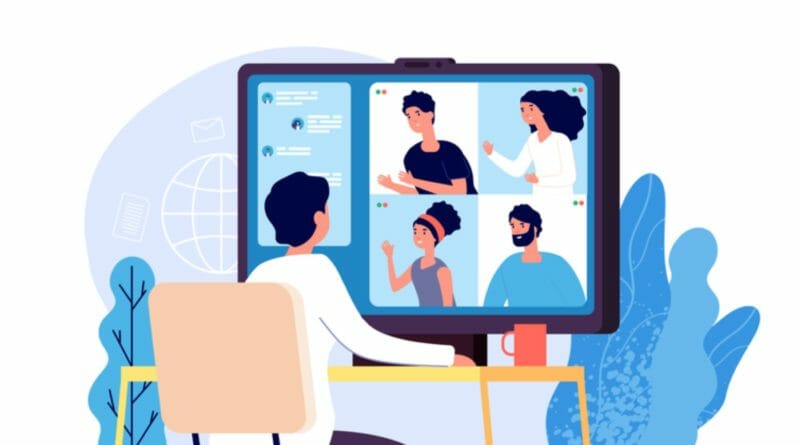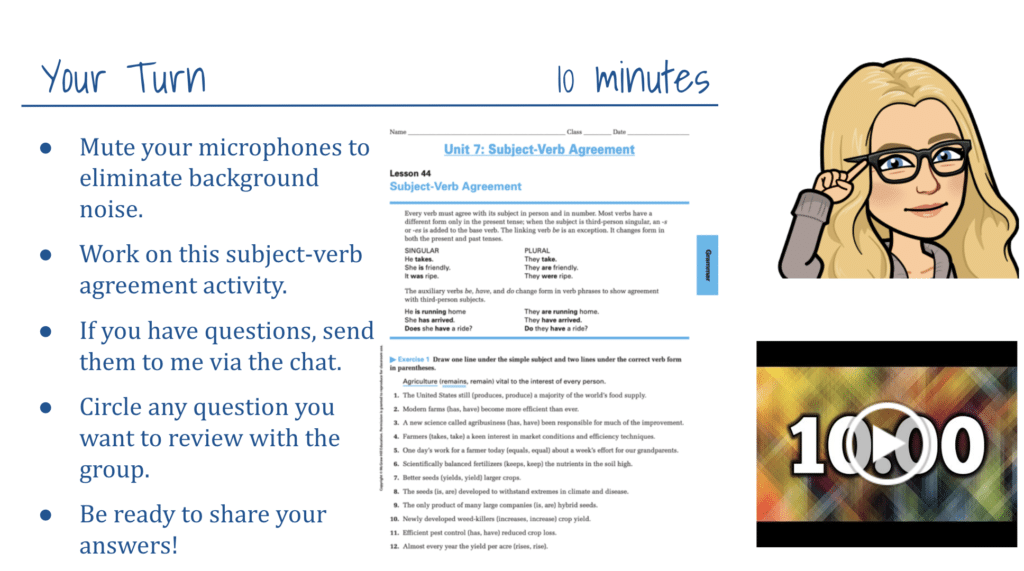Video Conferencing: Establishing Routines and Structuring Online Time with Students
I had the pleasure of chatting with Linwood Paul, an executive coach, for an episode of my podcast, The Balance. In the final moments of our conversation, I asked him what advice he had for achieving a work-life balance at this moment when many of us are both living and working in our homes. The first thing he said was “routines rule all.” I immediately thought about all of the teachers who are preparing to start the school year online and wondering how to structure their online time with students.
As teachers consider their routines for this upcoming year, I encourage them to take the ideas and values that guide the design and facilitation of their in-class work with students and adapt them for the online environment. For example, most teachers use flexible grouping strategies in the classroom based on the objectives of a lesson. They may provide whole group instruction, work with small groups, and conference with individual students. Similarly, teachers hosting video conferencing sessions will want to consider whether whole group, small group, or individual sessions make the most sense given the purpose of that session.
| Whole Group Sessions | Connect learners online Build community (e.g., icebreaker questions, scavenger hunts, or check-ins) Introduce concepts Provide an overview of the work for the week |
| Small Group Sessions | Provide differentiated instruction Guide practice and application with frequent check-ins Collect formative assessment data (e.g., check for understanding) Facilitate small group discussions |
| Individual Sessions | Personalize instruction Individualize practice and application Provide “real-time” feedback on student work Conference about individual student progress Conduct a virtual side-by-side assessment of student work |
Once teachers have a schedule and know how often they will be meeting students online, they can begin to think through a schedule or routine to guide that time with students. A routine can provide clarity for the teacher about how to plan for synchronous sessions as well as provide consistency for the students.
I have had several teachers ask about how to approach their work with students online, so I wanted to share an example. Below is a sample schedule I created for teachers who are meeting with their students online on Monday, Tuesday, Thursday, and Friday for an 80 minute block period. If teachers are meeting with students multiple days each week in video conferencing sessions, I encourage them to mix up the types of sessions they offer–whole group, small group, and individual. Teachers will likely find their small group and individual sessions the most rewarding as they provide time to work directly with students. In a distance learning scenario, those interactions are gold!

As teachers think about structuring their online time with students, remember that the moment when students typically get stuck or need additional support is when they are practicing and applying. Build time into your video conferencing sessions to allow students to mute their mics and put pen to paper. This can help you identify moments of confusion or gaps that need to be addressed. Teachers can project a slide like the one below to guide the offline practice during a video conferencing session.
As teachers think about how to create routines for themselves and their students online, I hope they will embrace their many roles from the architect of learning experiences to the coach supporting individual skill development. The physical distance between teacher and learner in an online course does create new challenges, but teachers who embrace their many roles online are likely to find their work more rewarding.
Source:
Video Conferencing: Establishing Routines and Structuring Online Time with Students


